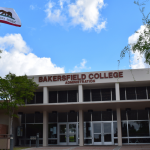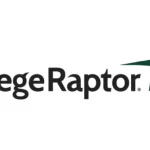Note: In part 1 of this 3 part blog series, we covered the programs that were shared during our recent NASFAA session on access and equity. In part 2, we covered specific resources and state-wide initiatives that were shared. In this final installment (part 3), we will cover specific technologies that were shared.
“Education is the most important door that will ever open.” – President Lyndon B. Johnson, in signing the Higher Education Act of 1965
“There’s a saying, ‘People won’t care how much you know until they know how much you care.” – Nedra Robinson, Teacher, Education Week
“Small actions will prove to be incredibly important in building and sustaining relationships with your students.” – Tamera Musiowsky, Teacher, Education Week
As part of the recent 2021 National Student Financial Aid Administrators (NASFAA) Virtual Conference, held June 21-25, financial aid leaders from three different types of higher ed institutions shared best practices around specific financial aid programs and technology that support access and equity across all underserved student populations.
This session, attended by over 2,000 financial aid professionals, was particularly timely given the budgetary and financial pressures colleges face, coming out of the pandemic. College administrators are keen to learn from other financial aid leaders about best practices and initiatives that are making a positive impact toward access and equity goals.
Two key questions were posed at the start of the session as a way to kick off the discussion, with an eye toward providing attendees with specific insights into how they might tackle the access and equity challenges at their institutions:
“How can an institution provide enough proactive support to ensure each student is set up for success?”
“How can the financial aid office be a part of the solution in an ever-resource constrained world?”
Session presentations were made by: Chandra Gonzalez, Assistant Director in the Office of Scholarships and Financial Aid at the University of Houston, a large 4-year public university with over 38,000 undergraduates; Anthony Morrone, Director of Financial Aid at Nevada State College, a public college with roughly 5,000 students; and Kristin Milligan, Director of Financial Aid at College of the Desert, a public community college with roughly 10,000 students.
Highlights included:
At Nevada State College, a Hispanic-Serving Institution (HSI) where 47% of students receive a Pell Grant and its student body closely reflects the broader Las Vegas population, several resources and technologies were shared:
CARE Team
The CARE Team provides online mental health screening, counseling services, and emergency funds. The CARE Team also supports a food pantry.
Online Financial Aid Applications
Online financial aid applications assist students in accessing institutional grants (for non-FAFSA filers), NSC Foundation scholarships (for most, a FAFSA is not required), and emergency HEERF funds.
Artificially Intelligent Chatbot
Nevada State College provides current and potential students with 24/7 access on its website via an artificially intelligent chatbot, powered by Ocelot. The conversational chatbot is available in both English and Spanish, and can converse with students regarding financial aid and other topics. The chatbot is paired with live chat, so users can access real-time agents when more personalized, human assistance is required.
Online Videos (FATV)
Nevada State College provides current and potential students with access to a vast library of short online videos covering all topics within financial aid. The videos are available in English and Spanish are accessible 24/7 and combine both tutorial and explainer styles.
At the University of Houston, which is both a Hispanic-Serving Institution (HSI) and Asian American and Native American Pacific Islander-Serving Institution where 40% of students receive a Pell Grant, several technology initiatives were shared, including a laptop borrowing program through the library, as well as a multilingual AI chatbot. Languages covered include: English, Chinese, Vietnamese, and Spanish.
At College of the Desert, a Hispanic-Serving Institution (HSI) serving the Coachella Valley of Riverside County in California where 61% of students receive a Pell Grant, several technologies were shared:
Artificially Intelligent Chatbot
Kristin Milligan shared that when the pandemic hit, the Financial Aid Office was the only department that had a chatbot up and running. Milligan added: “Shortly after, we had Admissions & Records, Bursars, EOPS/Care/Foster Youth, Counseling, TASC (tutoring) follow. We would like to be campus-wide by the fall term. Students need us 24/7 and this is a way to ensure our students can reach us during times that make the most sense for them.”
Online Workshops
The Financial Aid Office is offering remote workshops – not just for application assistance but for any financial aid questions. The college also offers one-on-one Zoom assistance for students as needed.
Missing Document Video
Milligan shared: “Last year we noticed that students were confused on how to submit a missing document. When we transitioned to online only they really struggled with this. We worked with Ocelot to develop a missing document video. This video has received great feedback from students.”
The Wrap
Collectively, the three institutions shared that efforts to promote access and equity across all student populations require a multifaceted effort. The Financial Aid Office has direct involvement with students as they work through finding ways to cover the costs of attending college and persisting through their educational journey. For this reason, the Financial Aid Office is in a critical position to assist students, and can be a key driver/facilitator of these initiatives.
Each panelist shared that their institutions are operating in a “resource constrained” environment which creates a natural tension to identify and support initiatives that can have the biggest impact. By providing individual support through mentorship, financial support, and a variety of bridge programs, institutions can provide life-changing 1:1 engagement with students. At the same time, scalable technologies, such as AI chatbots, online workshops, and online videos can “scale” support to provide even greater access.
Between institutional and state-based initiatives, as well as technological tools, these three institutions are lighting a torch for other colleges and universities that want to ensure access and equity for all students.















